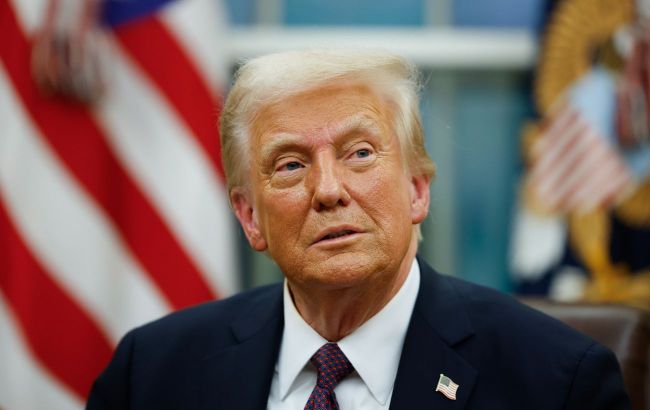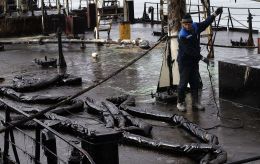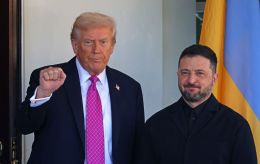Back to Moscow? How Trump suddenly made Europe rethink Russian gas
 Photo: Donald Trump's policies made Europe think about Russian gas after peace in Ukraine (Getty Images)
Photo: Donald Trump's policies made Europe think about Russian gas after peace in Ukraine (Getty Images)
Despite more than three years since Russia's invasion of Ukraine, major companies in Europe are once again talking about a return to Russian gas. Just a year ago, this seemed unthinkable, but now, they fear excessive dependence on American liquefied natural gas.
Why is Russian gas again being called a good idea in Europe, and is there a chance of increased imports?
Takeaways:
-
Why do Germany and France want Russian gas again?
-
How did Trump turn American LNG into a geopolitical tool?
-
Why is Europe unlikely to return to large-scale imports from Russia?
How Russian gas has once again become a "good idea" in Europe
Europe's energy security remains fragile, even though liquefied natural gas (LNG) from the US has helped fill the gap left by Russian supplies. However, President Donald Trump has upended relations with Europe and uses energy as a trump card in trade talks. There are fears that dependence on America will become another weak spot.
Against this backdrop, the leadership of the EU’s largest companies is cautiously calling a return to Russian gas imports a "good idea."
"If there is a reasonable peace in Ukraine, we could go back to flows of 60 billion cubic metres, maybe 70, annually, including LNG," said Engie’s Executive Vice President Didier Holleaux in an interview with Reuters.
According to Patrick Pouyanne, Chairman and CEO of France's TotalEnergies SE (which is the largest exporter of American LNG and also sells LNG from Russia), Europe will not return to the pre-war level of 150 billion cubic meters, but he would bet on 70 billion per year.
At Leuna Chemical Park, one of Germany’s largest industrial hubs, they believe Russian gas should return as soon as possible.
"It’s a taboo topic," said Christof Guenther, CEO and Managing Director of InfraLeuna, about the potential restoration of the Nord Stream pipelines. He noted that only pipeline gas would bring back jobs and industrial growth. Other Reuters sources in Germany also hope for Russian supplies to resume once peace is established in Ukraine.
How Trump uses the gas leverage to pressure Europe
Last year, American gas accounted for 16.7% of EU imports, while Russian gas made up 18.8%. This year, Russia’s share will drop below 10% after Ukraine halted transit. The remaining flows are mostly LNG.
Last week, EU Trade Commissioner Maroš Šefčovič said that member states are preparing to buy more American liquefied gas. This is something Donald Trump particularly wants, as he insists on reducing the trade surplus with Europe.
After imposing 20% tariffs, the President stated that Europe should spend $350 billion more on purchasing American energy resources. Then, he announced a 90-day pause on most tariffs, and the EU interpreted this as a signal to start trade talks. According to Politico, citing European officials, the bloc plans to resume negotiations to increase LNG purchases.
The European Union had been trying for several months to engage the Trump administration in resolving the issue. However, according to diplomats, their efforts were met with apathy from Washington. However, the situation has changed, and now there is an opportunity to make progress, one source said.
Still, the EU can't do much. LNG is bought by companies, not governments, and some countries have said their companies are already purchasing as much American gas as they can.
According to Tatiana Mitrova, a research fellow at Columbia University's Centre on Global Energy Policy, the tariff war has increased Europe’s concerns about dependence on gas from the US.
"It's becoming increasingly difficult to regard US LNG as a neutral commodity: at a certain point, it might become a geopolitical tool," Reuters quotes her as saying.
Can Europe pivot back toward Russia?
This week, Russia announced a new gas strategy that envisions annual production growth. In 25 years, production volumes are expected to reach 1 trillion cubic meters, largely due to a fivefold increase in LNG output.
By 2030, Moscow intends to launch four more plants in addition to those operating in Yamal and Sakhalin. But for now, the implementation of these projects is hampered by Western sanctions. The US administration has not indicated whether it is ready to lift any restrictions as part of negotiations aimed at ending the war in Ukraine, Bloomberg reports.
However, even the establishment of peace is unlikely to promote a return to large-scale imports from Russia. The European Union has set a goal to completely stop Russian energy imports by 2027. The publication of the plans has already been delayed twice, but according to Reuters, it is expected to happen on May 6. Brussels’ detailed strategy will include a phasing out of Russian oil and gas.
This move highlights the EU's struggle to deprive the Kremlin of revenue that could be used to fund the war in Ukraine. The plan’s announcement had been postponed due to concerns that Hungary and Slovakia might block further extension of European sanctions. Reportedly, a workaround has been found by introducing tariffs on Russian energy exports, though the details are not being disclosed.
Another factor is the termination of long-term contracts. As the Financial Times notes, Brussels is examining legal options for doing this without paying large penalties to Russia. According to three officials, the European Commission is reviewing contracts for the possibility of invoking force majeure, allowing importers to safely exit their obligations.
Despite the pressure, EU countries are hesitant to force companies to reduce LNG supply contracts with Russia. This could lead to price spikes due to high costs and geopolitical shocks. The complexity also lies in the fact that the contracts are confidential, and invoking the war in Ukraine as force majeure may not be legally sufficient, FT writes.
Sources: publications by Reuters, Politico, Bloomberg, and Financial Times

